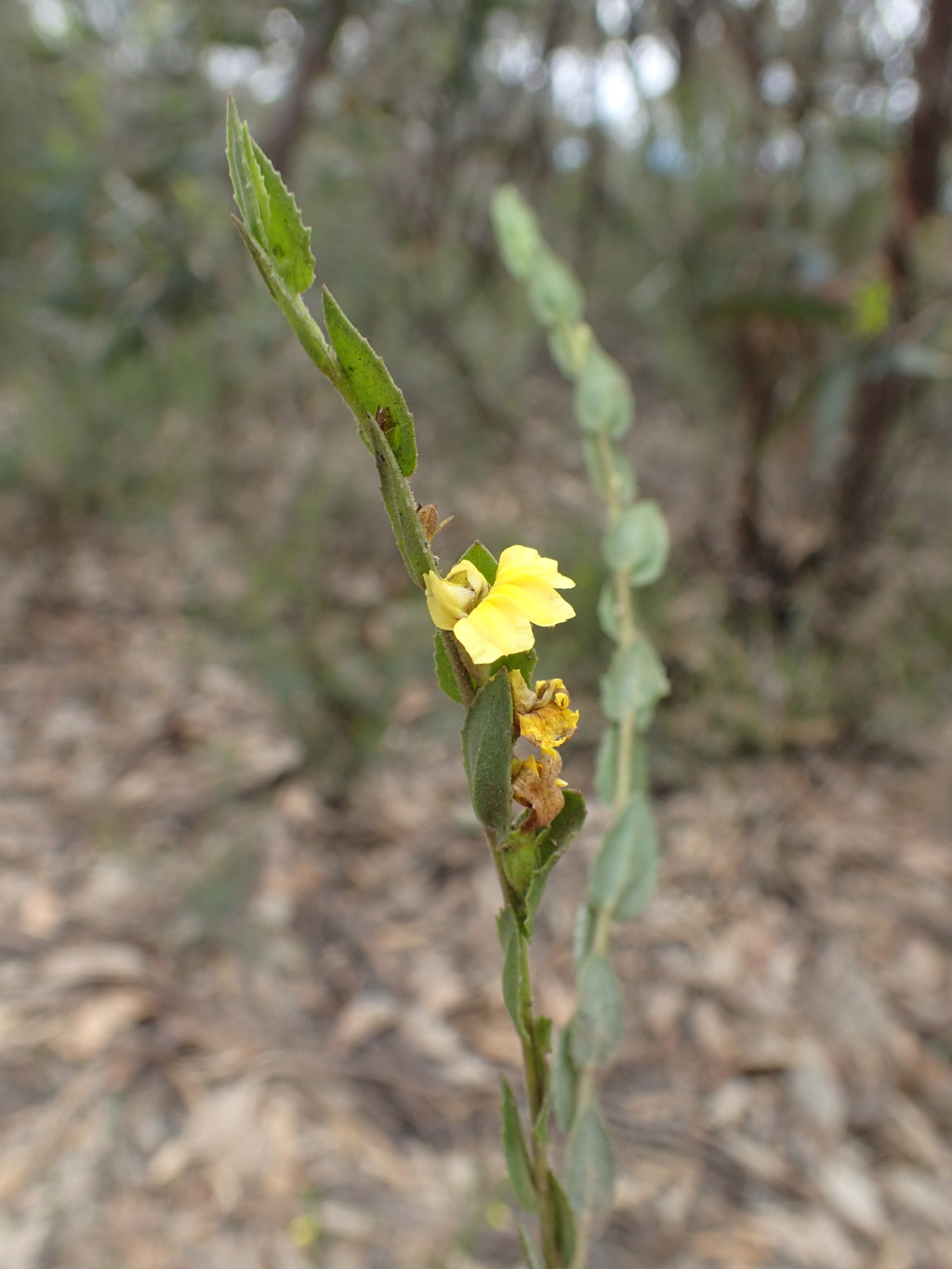Goodenia
Perennial shrubs or annual or perennial herbs, glabrous, hairy and/or viscid. Leaves basal or cauline, sessile or petiolate, entire to pinnatipartite, often with axillary hairs. Inflorescence racemose, sometimes a thyrse, spike or subumbel, or flowers solitary. Flowers strongly zygomorphic, sometimes fan-shaped; bracteoles present or absent; sepals (3 or) 5, free above the hypanthium; corolla shortly tubular, 2-lipped (when not fan-shaped), often with blunt outgrowths inside, sometimes auriculate, yellow to white or rarely pinkish-mauve or blue; corolla-lobes unequal (usually) or more-or-less equal, often winged; stamens free, epigynous, anthers free; ovary inferior, or, rarely superior, incompletely 2-celled, ovules few-many; style simple or 2–4-fid, glabrous or villous, indusium 2-lipped, c. horizontal (rarely vertical) with long bristles on lips, stigma entire to emarginate. Fruit usually a 2- or 4-valved capsule, rarely fleshy and/or indehhiscent; seeds flat or lenticular, winged or with a thickened rim.
About 250 species, predominantly Australian with a few species extending to Papua New Guinea, Indonesia, Malaysia, southern China, Philippines, Thailand, Cambodia, India. One species sshared with New Zealand and western South America.
Species previously included in Selliera and Velleia were transferred to Goodenia following extensive molecular studies (Shepherd et al. 2020).
In the following key and descriptions, where plants have a bracteole along the peduncle/pedicel, the peduncle is measured to the bracteoles, and the pedicel from the bracteoles to the base of the calyx.
Jeanes, J.A. (1999). Goodeniaceae. In: Walsh, N.G.; Entwisle, T.J., Flora of Victoria Vol. 4, Cornaceae to Asteraceae, pp. 589–615. Inkata Press, Melbourne.
 Spinning
SpinningShepherd, K.A.; Lepschi, B.J.; Johnson, E.A.; Gardner, A.G.; Sessa, E.B.; Jabally, R.S. (2020). The concluding chapter: recircumscription of Goodenia (Goodeniaceae) to include four allied genera with an updated infrageneric classification.. Phytokeys 152: 27–104.



